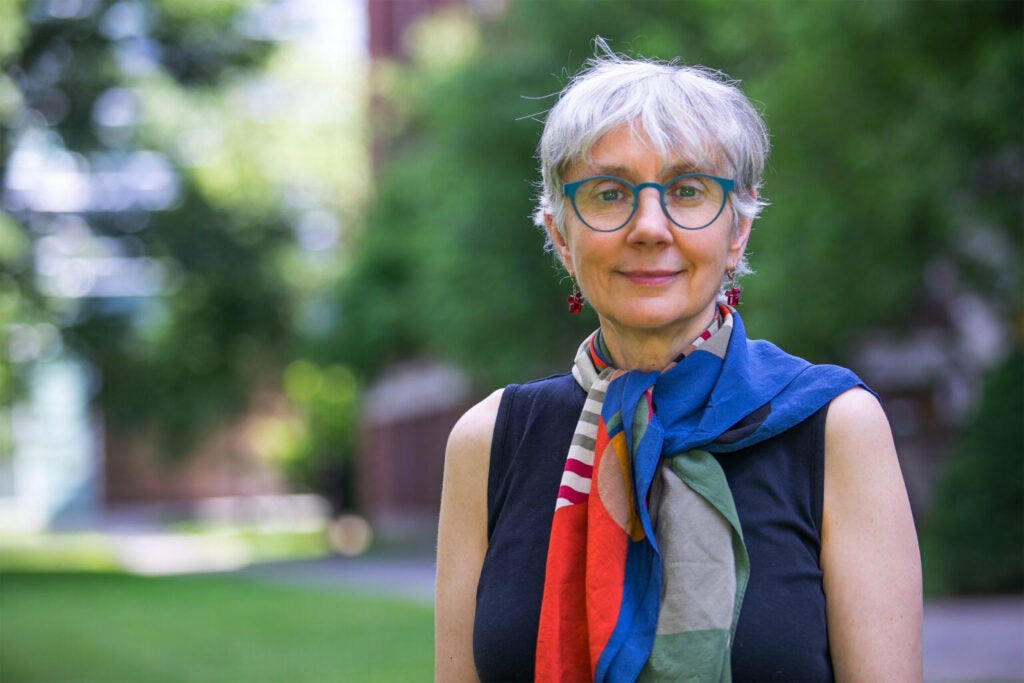5 reasons you crack under pressure
Everybody makes mistakes. Professional baseball players make hits less than half the time at bat. Experienced lawyers make decisions that lead to them losing cases all the time. But what if there was a way to make fewer missteps? In his new book, Leonard L. Riskin, law professor and senior fellow at the Center on Negotiation, Mediation, and Restorative Justice at Northwestern University Pritzker School of Law says the key to succeeding in high-pressure situations is mindfulness.
On Monday, Riskin, alongside a panel of his colleagues, shared insights from his book “Managing Conflict Mindfully: Don’t Believe Everything You Think” in a discussion hosted by Harvard Law School’s Program on Negotiation. Riskin, a pioneer in mindfulness practice in law, believes being aware of emotions and unhelpful thoughts and feelings help in decision-making critical to not only law, but many other professions.
“I have noticed that even people who are very well-trained in negotiation and have read everything and have a lot of experience will from time to time, really mess up a particular negotiation or mediation,” Riskin said. “And the same thing applies in almost any field … we’re also talking about any kind of a difficult situation.”
Riskin described five obstacles to mindfulness:
• Automatic or habitual ways of thinking, feeling, or behaving;
• Excessively self-centered perspectives;
• Poor management of emotions;
• Insufficient social skills;
• Inadequate management of focus or awareness.
The five obstacles, Riskin said, often interact with each other in difficult situations. To illustrate, he shared a story of a negotiation during which he started disliking one party and favoring the other. At the same time, he was worrying about what others thought of him, and whether they believed he was a capable mediator.
“So I have these voices running around in my head. Meanwhile, I’m listening to them and feeling awful about myself. And I’m not listening to the actual conversation that’s going on in the room,” Riskin said.
Riskin combines his five-obstacle theory with a psychological framework known as “Internal Family Systems” that has influenced his law practice and teaching for the last decade.
“It’s a theory of the mind and an approach to psychotherapy which is based on these ideas that in our minds there are two kinds of entities. There’s a self and then there a whole bunch of things called parts, which are the same thing as what psychologists have called ‘sub personalities.’”
The parts, Riskin said, represent our battling interests like a family. One part of your psyche may be childlike and lack forethought, while one may be parental and protective. For Riskin, his parental subpart interrupts his mindfulness to tell him to chat up important scholars, even when he has nothing to say to them.
“I was able to resist,” Riskin said. “You can achieve some freedom from these inner voices if you’re aware of them.”
To conclude the talk, Riskin shared starting places for those interested in implementing some mindfulness into their own practices. For one, he says the RAIN exercise, written about by psychologist Tara Brach, helps slow down busy minds and take stock of decision-making processes. Riskin also suggests reading Judson Brewer’s book “Unwinding Anxiety” about learning to pause while in the throes of anxiety.
“The more you practice it, the more diligent you are, the better able you are to manage these kinds of distractions and feel better,” Riskin said.



